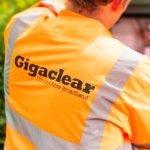Welsh Gov Detail New 30Mbps Superfast Broadband Plan for Wales UPDATE2
As expected the Welsh Government has this afternoon set out the first tentative details of their new strategy to help make “fast reliable broadband” (defined as 30Mbps+) available to “every property” in Wales, which will involve several contracts (3 lots) and could cover 88,000 premises.
At present the existing Superfast Cymru project with Openreach (BT), which was supported by a public investment of £225 million, has already helped to spread 30Mbps+ (download speed) capable fixed line broadband services to cover 93.8% of homes and businesses across Wales. This was achieved on top of all the work that has already been done by separate commercial deployments.
NOTE: The Thinkbroadband coverage estimate below is to the end of 2017. Most of the “Ultrafast” coverage is currently being delivered via Virgin Media’s cable network, alongside a little bit of “full fibre” FTTP/H from various operators.
Advertisement
| Area | % Superfast 24Mbps+ | % Superfast 30Mbps+ | % Ultrafast 100Mbps+ | % Under 10Mbps USO |
| United Kingdom | 95 | 94.7 | 53.25 | 3.8 |
| Wales | 94.2 | 93.8 | 32.71 | 4.3 |
The original programme is now slowly coming to an end and as such the Welsh Government (WG) has been working on a replacement since 2016 (here and here), which is supported by a proposed public investment of £80 million (i.e. £2m from Broadband Delivery UK, £20m from the EU, £20m from the WG and a £37m public reinvestment from gain-share / BT clawback via the existing contract).
The WG has already run both an Open Market Review (OMR) and public consultation on their proposals. Interestingly the latter suggested that the WG could in theory call upon a total allocation of “up to” £200m of public funding in order to support their procurement, although this included potential contributions from local authorities (highly susceptible to change) and has not been mentioned since.
Today Julie James AM (Leader of the House and Chief Whip) revealed a few further details about the proposed strategy in a Plenary session of the National Assembly for Wales, which will be contracted out in “lots” to address problems in specific parts of the country. The first contracts could be awarded in the late spring or early summer 2018, with “work beginning shortly after.”
Quick Highlights of the Proposal
* The existing Superfast Cymru contract with Openreach has been extended by 2 months so that the operator can complete the deployment for 2,500 premises that have yet to be finished “at no extra cost to the Welsh Government.”
* Julie stated that the latest “tested and verified figures for Superfast Cymru” for the end of September 2017 show over 665,000 premises have access as a result of the current project. Under the grant agreement Openreach are required to provide access to 690,000 by the end of the project. Final figures are due to be available in the Spring.
* Some 88,000 premises (not 89,000 as previously reported – following further analysis) have now been identified as not being served without further government intervention.
* The funding commitment of £80m was reaffirmed, although interestingly Julie James threw a spanner into the works by stating that the “funding available is unlikely to deliver fast broadband to every premises that we have identified.” We don’t know if this is a reference to the fact that more public funding may be needed or if Julie is merely hoping for a big commitment from the private sector or other sources.
* The WG has invited the market to present solutions in 3 lots with an emphasis on rural delivery, business prioritisation and ultrafast 100 Mbps services.
* The successful bidder will be required to identify from the outset the specific premises that will be served in any given lot. The aim of this is to provide greater certainty for residents and businesses in the plan, it will also enable those premises not addressed to focus on alternative approaches. We suspect this will be difficult since operators usually need to conduct detailed engineer surveys before confirming coverage.
* A new scheme will be established that “supports communities demonstrating tangible demand, particularly targeting those communities that are not covered by suppliers in their response to the invitation to tender“. This will be supported by a “broadband outreach team,” which will help communities to harness (aggregate) their demand and define a local project etc. More details are expected in the future, although this already sounds similar to the co-funded “community fibre” style schemes that Openreach and some local authorities in England have established.
* Unspecified safeguards will be included to “ensure communities are kept up to date as far as possible on whether they will be included,” which means nothing without more detail.
* The existing voucher schemes – Access Broadband Cymru (ABC) and ultrafast connectivity vouchers – will continue to provide funding in parallel to this work. Both schemes are currently being reviewed to ensure that they continue to provide the right solutions and complement the new Superfast Cymru successor scheme and the wider broadband landscape.
* Openreach has been invited to provide details of structures built but not completed, and the Welsh Government has then pledged to look at how these can be completed under the existing grant agreement.
The above approach may attract a mix of alternative network ISPs via various different fixed fibre optic and wireless technologies, much as it has done already in parts of England (Gigaclear, Airband etc.). No doubt BT (Openreach) may also bid on some of the lots, provided the economic model makes sense for them because remote rural areas are extremely challenging (it costs disproportionately more to reach far fewer properties).
Advertisement
Even so there could still be a tiny number of areas where inferior Satellite is perhaps the only viable option but this will depend upon the contract awards.
Julie James said:
“Through Superfast Cymru we have fundamentally altered the broadband landscape in Wales, bringing superfast broadband to areas of Wales that simply would not have been connected.
We must not lose sight of the significant achievement that this large scale engineering project represents. Homes and businesses the length and breadth of Wales are now enjoying the benefits of this investment and accessing digital services.
Despite the success of Superfast Cymru in transforming broadband connectivity across Wales, there is clearly more work to be done and this Government is committed to taking further action.
The suite of measures I am announcing today, when taken together, will help us to realise the ambition described in Taking Wales Forward to bring people together digitally by offering fast reliable broadband to every property in Wales.
Together, the successor scheme, the community scheme and our voucher schemes will provide a comprehensive package of interventions that will help us meet the challenges ahead.”
As we’ve said before, the proposed £80m would appear to be too low for a decent universal fixed line deployment, even if matched by the private sector, and that has today been confirmed. By comparison Scotland’s commitment to invest £600m of public funding into reaching nearly universal coverage (this aims to benefit around 280,000 premises) is perhaps more realistic (here).
When scaled Scotland’s commitment is roughly double the £80m spend for Wales but, as above, much will depend upon how much extra private sector or public investment can be found. Finally, the WG has previously spoken of 2020 as the target for achieving their coverage aspiration of reaching “every property” but today’s speech made no mention of completion timescale, which we imagine will be subject to the outcome of their tender process.
In our view 2020 may now be unrealistic (2021 or 2022 might be viable) but it all depends upon the technology split, as well as any further delays to the awarding of contracts or changes to funding levels.
Advertisement
UPDATE 6:04pm
The related tender document can now be found online, which states that the aim is to “deliver superfast (30+Mbps) broadband services to as many UE premises as possible” and “the potential value of the project is up to [£200m], of which [£62m] of funding has been confirmed, and up to an additional [£138m] of project funding may be available.” The LOTS are as follows:
Lot 1 — North West Wales (Estimated value: £14.858m)
Intervention Area of 21,125 NGA white premises has been identified with an additional 29820 premises potentially available pending further information.Lot 2 — East Wales (Estimated value: £21.706m)
Intervention Area of 30,862 NGA white premises has been identified with an additional 21183 premises potentially available pending further information.Lot 3 — South West Wales (Estimated value: £25.436m)
Intervention Area of 36,166 NGA white premises has been identified with an additional 17552 premises potentially available pending further information.
UPDATE 1st Feb 2018
We did ask the WG what happened to the 2020 target for “every property” in Wales to be covered by 30Mbps+ broadband and received the following reply, which is somewhat evasive.
A Welsh Government Spokesperson told ISPreview.co.uk:
“The range of new measures, backed by funding of £80m, will further extend fast and reliable broadband coverage in Wales by the end of this assembly term. These measures are part of a number of interventions to provide access to superfast broadband to every property in Wales. Any premises not enabled through the Superfast Cymru project or commercial rollouts can already apply for a grant through our Access Broadband Cymru or Ultrafast Connectivity Voucher Schemes.”
Mark is a professional technology writer, IT consultant and computer engineer from Dorset (England), he also founded ISPreview in 1999 and enjoys analysing the latest telecoms and broadband developments. Find me on X (Twitter), Mastodon, Facebook, BlueSky, Threads.net and Linkedin.
« Global Fixed Broadband Subscribers Reach 913Million as Copper Wanes

















































Comments are closed